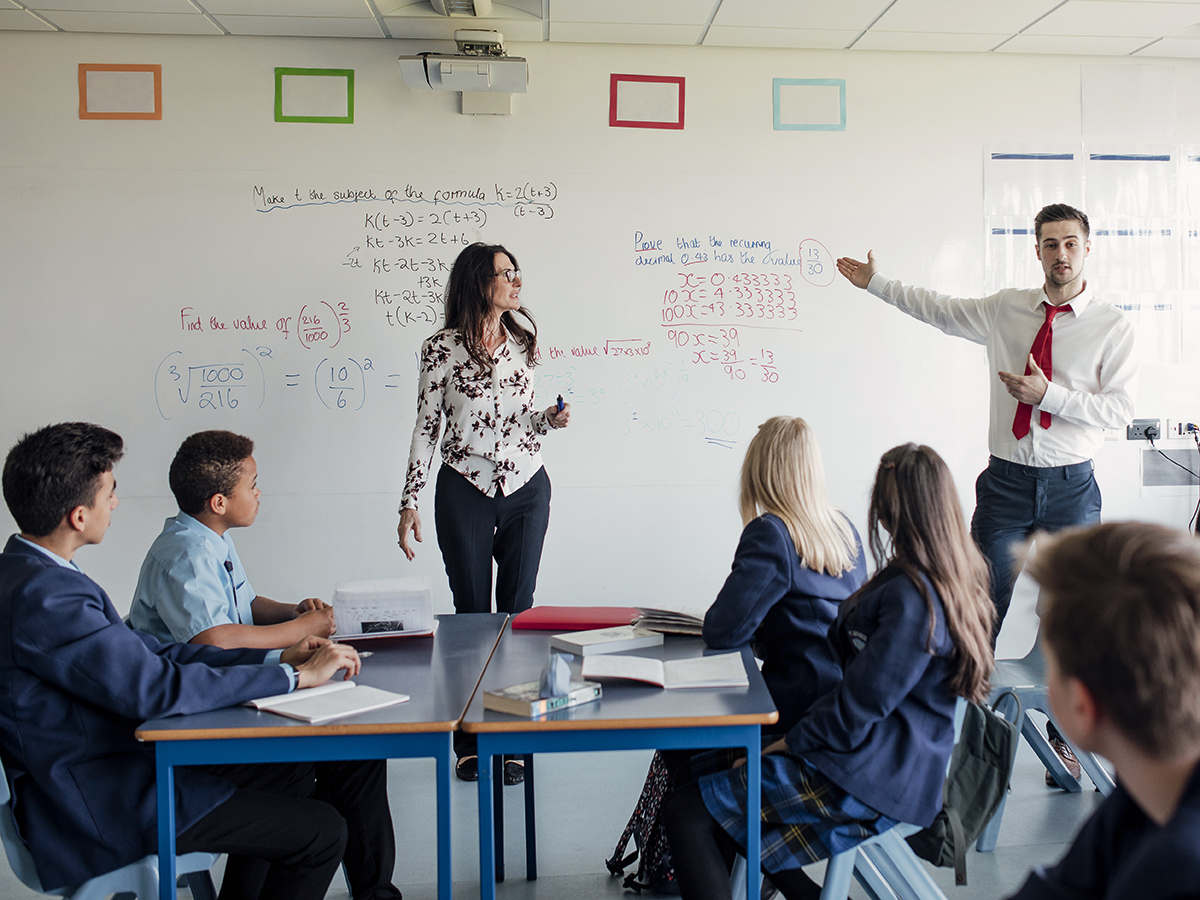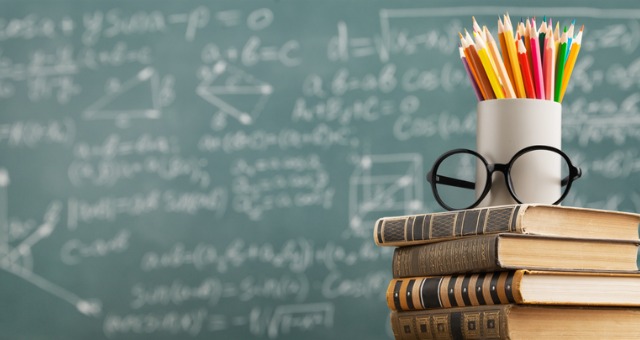Unlock Your Child’s Potential with Primary Science Tuition Singapore
Unlock Your Child’s Potential with Primary Science Tuition Singapore
Blog Article
A Comprehensive Guide to the Different Learning Techniques in Key Science Instruction
The exploration of varied learning approaches in key scientific research direction provides a chance for teachers to boost pupil interaction and comprehension substantially. By analyzing hands-on understanding techniques, inquiry-based techniques, and collaborative methods, we can recognize effective techniques that provide to numerous learning styles. In addition, the integration of modern technology and differentiated direction plays a crucial function in promoting an inclusive atmosphere. The concern remains: just how can these methods be efficiently implemented in the class to maximize their effect? The response hinges on a more detailed analysis of each technique and its ramifications for teaching science.

Hands-On Discovering Methods
Hands-on knowing techniques play a critical duty in main science instruction, engaging trainees in active expedition and testing. These approaches enable learners to interact directly with phenomena and materials, promoting a much deeper understanding of clinical principles. By utilizing manipulatives, designs, and real-life experiments, educators develop an environment where students can observe, assume, and check their ideas.
Such strategies not only boost comprehension yet also grow critical thinking and analytical abilities. When trainees join tasks like building straightforward equipments, planting seeds, or performing chemical reactions, they are urged to ask questions and seek answers with their very own observations. This experiential technique aids to debunk intricate scientific principles, making them much more available and relatable.
Moreover, hands-on knowing advertises collaboration among peers, as trainees commonly operate in teams to conduct experiments or share searchings for. This teamwork not just enhances their understanding experience but also creates crucial social abilities. Eventually, incorporating hands-on methods in key scientific research guideline fosters a long-lasting love of understanding and interest concerning the environment, laying a solid structure for future scholastic searches in scientific research and past.
Inquiry-Based Learning
Inquiry-based understanding is a training method that motivates trainees to ask inquiries, examine sensations, and build their own understanding of scientific principles. This technique shifts the focus from conventional teacher-led instruction to a more student-centered experience, where students take the campaign in their educational journey. By cultivating curiosity, inquiry-based learning advertises much deeper interaction with the product, allowing students to discover topics in a significant context.
In method, this technique frequently entails hands-on experiments, monitorings, and important thinking tasks that straighten carefully with the clinical method. Trainees are motivated to formulate theories, design investigations, and analyze information, which cultivates vital abilities such as analytic and logical reasoning. The role of the teacher in this structure is to assist in expedition, assisting pupils via the query procedure while urging independent thought and cooperation.
Additionally, inquiry-based knowing nurtures a feeling of ownership over the discovering procedure, motivating pupils to seek knowledge actively. This approach not only boosts understanding of scientific principles however also cultivates a lifelong love for knowing, gearing up pupils with the abilities required to browse a significantly complicated world.
Collaborative Understanding Approaches
Collective understanding approaches equip pupils to involve in meaningful interactions with peers, promoting a common duty for their educational outcomes. In main scientific research guideline, these strategies encourage learners to collaborate to check out scientific ideas, address problems, and conduct experiments (primary science tuition Singapore). By taking part in group activities, trainees can take advantage of diverse point of views, enabling richer understanding and retention of scientific knowledge
One key aspect of collaborative knowing is the emphasis on communication abilities. Pupils must verbalize their thoughts, listen actively to others, and negotiate concepts, every one of which are essential expertises in both scholastic and real-world contexts. This social interaction not just improves their understanding of scientific principles yet additionally advertises team effort and conflict resolution skills.
In addition, joint understanding often brings about raised inspiration and interaction. When students see the worth of their payments within a group, they are most likely to take possession of their discovering journey. Teachers why not check here can promote this process by designing organized team jobs that align with educational program goals while providing advice on efficient collaboration strategies. In general, including collective knowing approaches in key science guideline cultivates a vibrant knowing setting that prepares students for future scholastic and social difficulties.
Modern Technology Integration in Science
The combination of modern technology in key science instruction improves discovering experiences by giving cutting-edge devices and sources that sustain numerous teaching approaches, including collective understanding - primary science tuition Singapore. Using digital platforms, simulations, and interactive applications enables trainees to involve deeply with clinical ideas, promoting an extra hands-on approach to learning
Virtual labs, for instance, allow learners to conduct experiments safely and efficiently, advertising inquiry-based understanding. These devices can imitate real-world clinical situations, permitting pupils to envision intricate procedures that would be challenging to replicate in a traditional class setup. Innovation promotes communication and partnership among trainees, as they can share findings and function with each other on tasks through on-line systems.
Additionally, multimedia discussions and educational video clips can enrich lessons by dealing with diverse understanding styles, making abstract concepts a lot more easily accessible. Data evaluation tools additionally equip pupils to gather and analyze clinical data, enhancing important believing abilities. Generally, the strategic unification of technology in main scientific research direction not just enhances interaction yet additionally prepares students for a technically innovative society, furnishing them with essential skills for future clinical undertakings.
Distinguished Guideline Strategies
Separated instruction techniques are crucial for addressing the diverse requirements of students in key science education. These techniques allow educators to tailor their mentor techniques to fit differing capacities, passions, and learning styles within the classroom. By employing distinguished learn this here now guideline, educators can create an inclusive environment that fosters engagement and enhances understanding of scientific concepts.
One effective strategy is to use flexible grouping, which allows students to collaborate with peers at comparable ability degrees or with varying point of views. This method encourages peer learning and promotes vital thinking. Additionally, offering selections in tasks can equip students, allowing them to pick jobs that resonate with their passions while still meeting curricular purposes.
Additionally, integrating tiered projects is another useful method. Deliberately jobs with differing levels of complexity, instructors can make certain that all trainees are appropriately tested, regardless of their effectiveness. Using formative evaluations to gauge comprehending further makes it possible for instructors to readjust their training approaches dynamically, making sure that each student gets the assistance they need.
Inevitably, look at this now carrying out distinguished guideline techniques in key science education and learning not just enhances pupil learning results yet likewise grows an enthusiasm for scientific research, preparing students for future academic searches.

Verdict
In summary, effective primary science instruction necessitates a diverse method that encompasses hands-on learning, inquiry-based approaches, and collective methods. The assimilation of modern technology and differentiated instruction even more provides to varied understanding styles, promoting an atmosphere favorable to exploration and vital thinking.
The exploration of varied understanding approaches in key scientific research direction provides an opportunity for educators to boost pupil interaction and comprehension significantly.Hands-on understanding strategies play an essential function in main science guideline, engaging students in energetic exploration and experimentation.Inquiry-based understanding is a training method that urges trainees to ask questions, explore sensations, and construct their very own understanding of scientific principles.Collective learning strategies equip pupils to engage in purposeful interactions with peers, cultivating a shared duty for their academic outcomes. Generally, incorporating collective learning techniques in primary scientific research instruction cultivates a vibrant knowing setting that prepares students for future academic and social difficulties.
Report this page